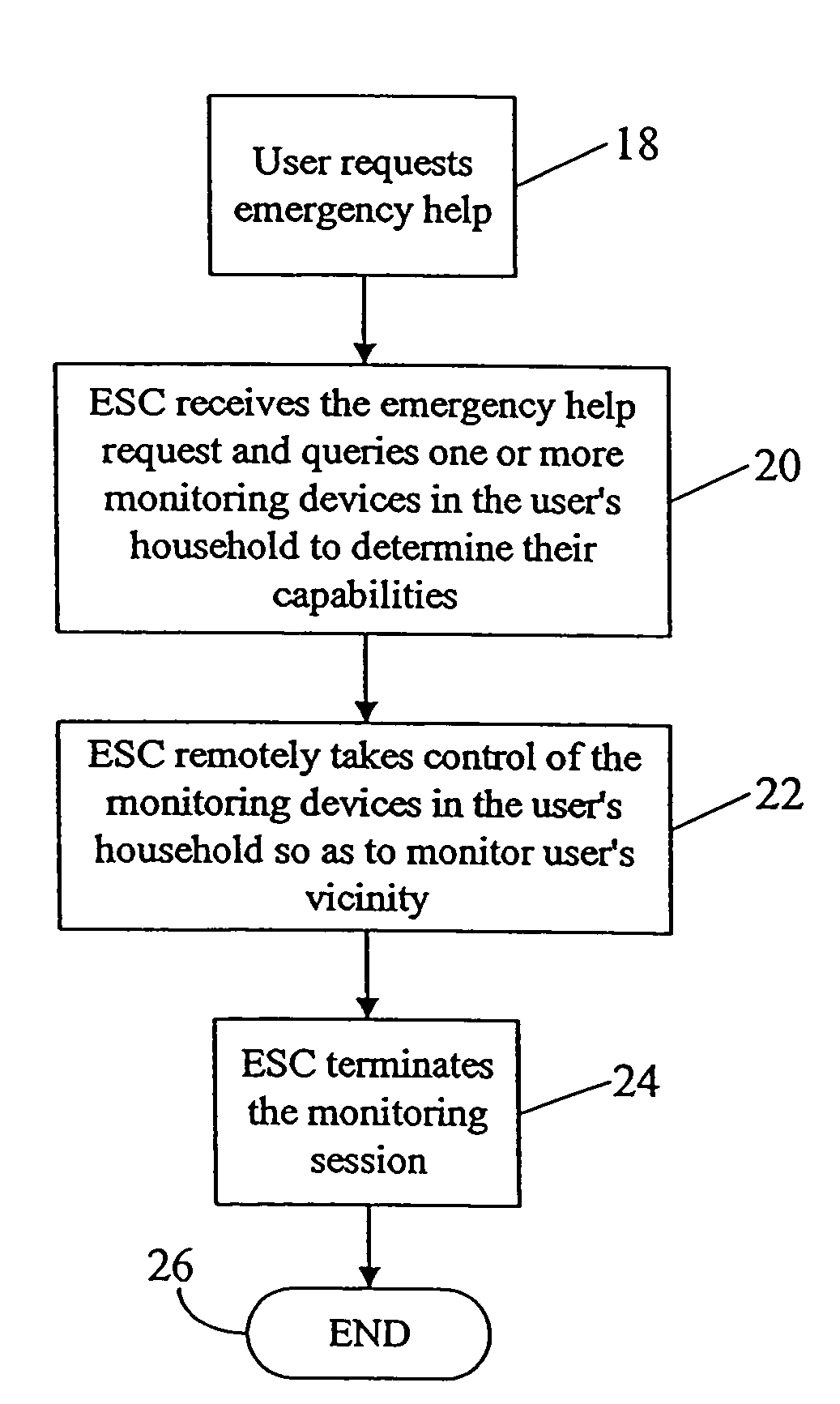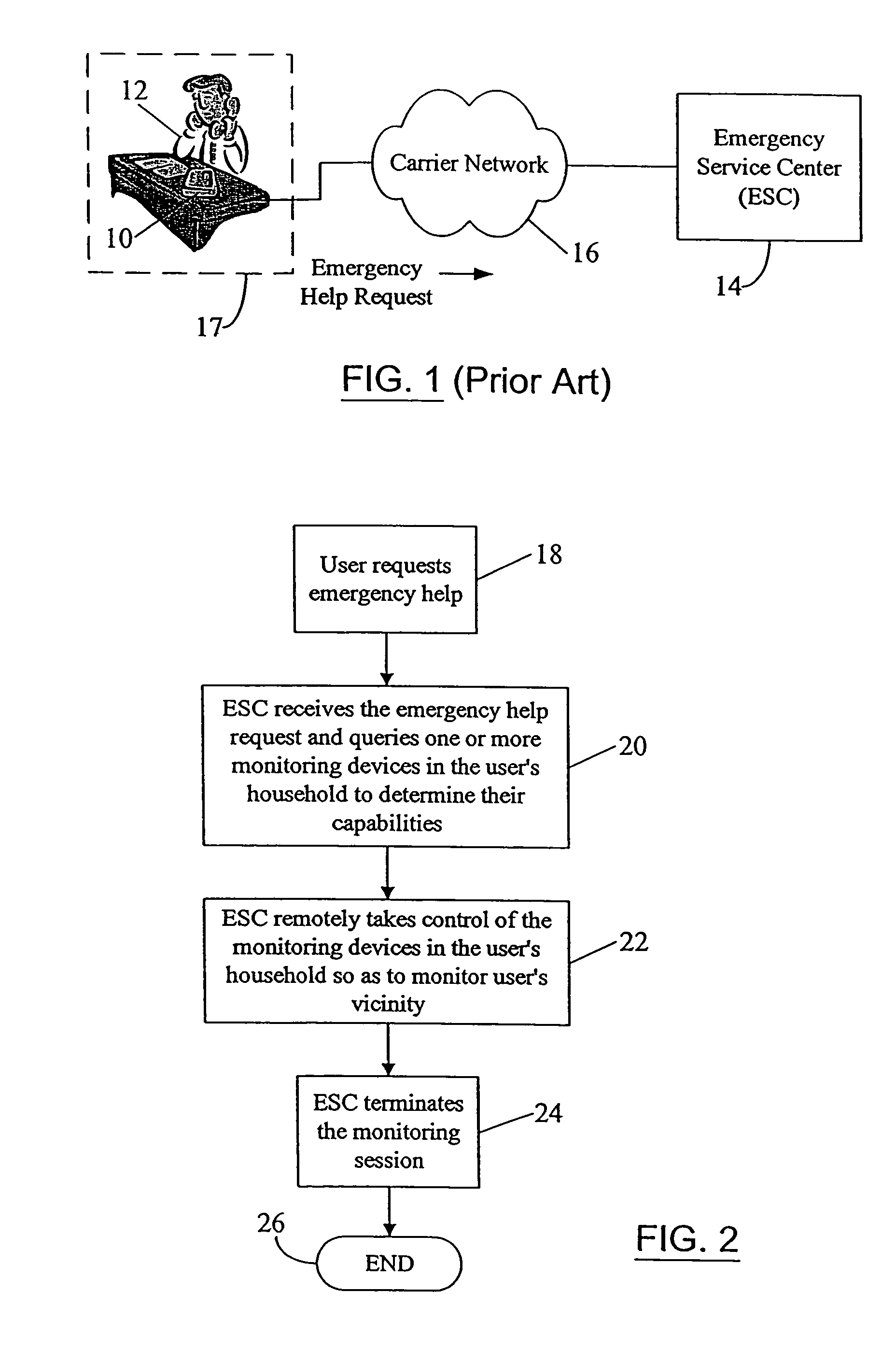Multimedia emergency services
a multi-media, emergency service technology, applied in the field of multi-media emergency services, can solve the problems of many monitoring devices not being active, many users may not be physically capable of adequately describing the user's vicinity, and many users may not be able to adequately describe the user's vicinity, etc., to achieve a better picture of the emergency and its impact, and better monitoring of the user's vicinity
- Summary
- Abstract
- Description
- Claims
- Application Information
AI Technical Summary
Benefits of technology
Problems solved by technology
Method used
Image
Examples
Embodiment Construction
[0024]It is noted at the outset that the numeral 17 is primarily used hereinbelow to indicate that portion of the user's actual household or dwelling which is to be monitored when an emergency is reported, i.e., that portion of the user's household which comprises the relevant vicinity for the user in the time of emergency. Thus, in some situations (e.g., when the user 12 is having a heart attack), the term “household” (as represented by numeral 17) may simply refer to a single room or office within the user's actual household. On the other hand, in some other situations (e.g., when the user's household is robbed or burglarized), numeral 17 may represent the user's entire household, including different rooms, offices, basement, etc., because of the need to monitor different locations, for example, to assess damage or to locate any culprit hiding within the household. Furthermore, the user 12 may not even be physically present in the user's household 17 that is to be monitored. For e...
PUM
 Login to View More
Login to View More Abstract
Description
Claims
Application Information
 Login to View More
Login to View More - R&D
- Intellectual Property
- Life Sciences
- Materials
- Tech Scout
- Unparalleled Data Quality
- Higher Quality Content
- 60% Fewer Hallucinations
Browse by: Latest US Patents, China's latest patents, Technical Efficacy Thesaurus, Application Domain, Technology Topic, Popular Technical Reports.
© 2025 PatSnap. All rights reserved.Legal|Privacy policy|Modern Slavery Act Transparency Statement|Sitemap|About US| Contact US: help@patsnap.com



